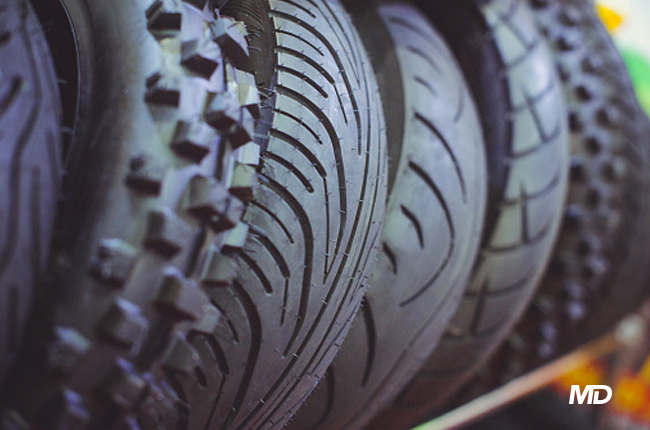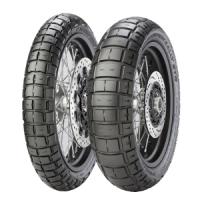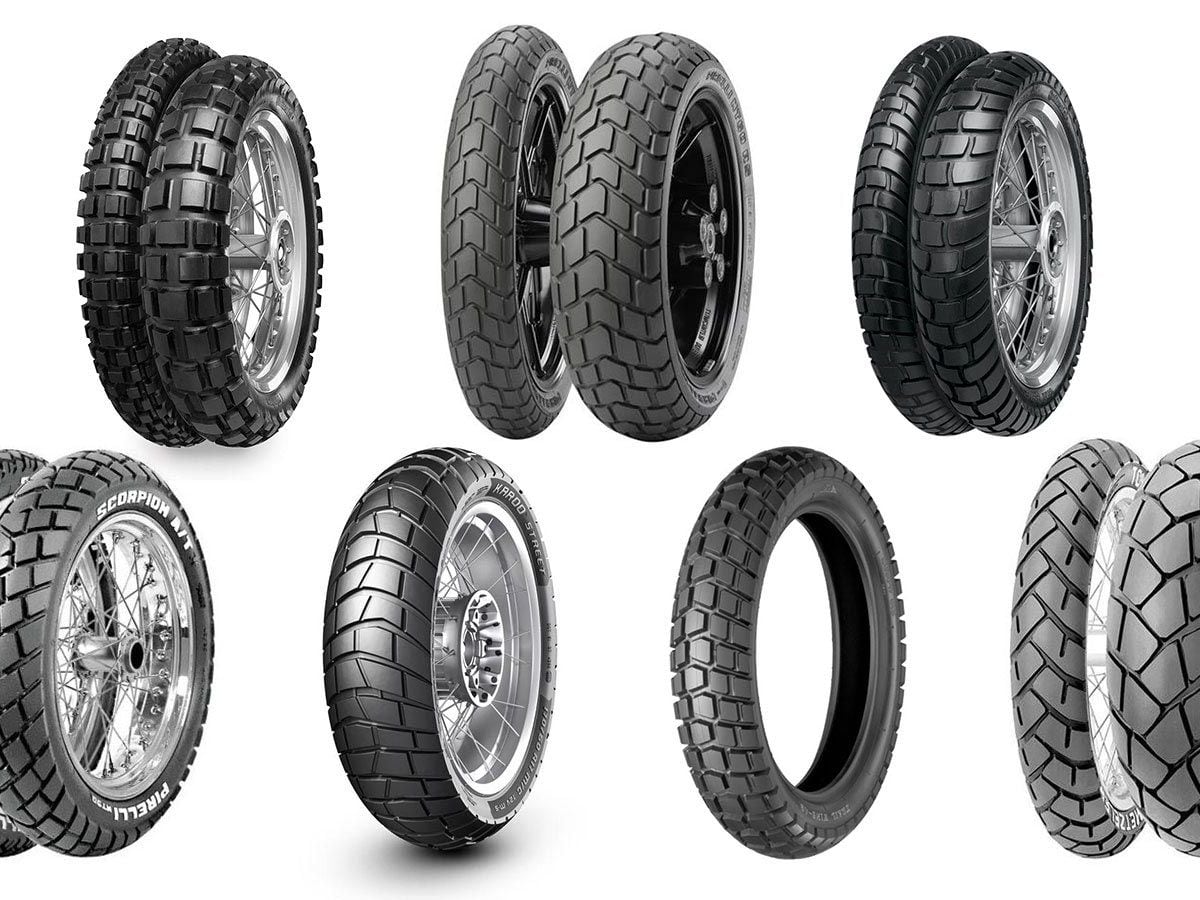Motorcycle Tyre Guide for Handling and Handling Tips
Motorcycle Tyre Guide for Handling and Handling Tips
Blog Article
Find Out Why Normal Maintenance Is Important With This All-Encompassing Motorcycle Tyre Guide

The Importance of Motorcycle Tyre Maintenance
Although often neglected, Motorcycle tire upkeep plays an important duty in ensuring both safety and efficiency. Disregarding this fundamental element can bring about major consequences, consisting of lowered traction, boosted quiting distances, and a greater risk of crashes. Routinely examining tire stress is critical, as under-inflated or over-inflated tires can negatively impact dealing with and stability. Additionally, preserving appropriate positioning and balance is necessary for optimizing wear patterns and extending tyre life.Tyre maintenance also consists of examining for noticeable damage, such as cuts, leaks, or protrudes, which can jeopardize architectural integrity. Making sure that tyres are cost-free from particles and contaminants is essential to make best use of grasp on different surfaces. Ultimately, consistent interest to Motorcycle tire maintenance not only enhances the riding experience yet likewise safeguards the cyclist's wellness, making it an important practice for every Motorcycle fanatic.
Exactly How to Inspect Tread Deepness
To guarantee peak efficiency and safety and security, examining the tread deepness of Motorcycle tires is an essential maintenance task. Cyclists can examine tread deepness using a basic method called the penny examination. By inserting a cent into the step grooves with Lincoln's head dealing with down, one can figure out if the tread is sufficient. If the top of Lincoln's head shows up, it shows that the tread depth wants and the tires must be replaced.Additionally, numerous Motorcycle tires feature tread use indications, which are little raised pens within the grooves. When the walk puts on down to the level of these signs, it signifies that the tyre has reached its restriction and needs focus (motorcycle tyre guide). Consistently checking tread depth not just enhances grip and stability yet also improves general safety, particularly in damp problems. Preserving a suitable tread depth is essential for excellent handling and efficiency on the roadway

Recognizing Tyre Pressure and Its Effect
Recognizing tyre stress is important for Motorcycle performance and safety. Perfect stress levels directly influence taking care of qualities and general security when traveling. Neglecting appropriate tire rising cost of living can cause increased wear and prospective security dangers.
Optimum Stress Degrees
Keeping optimal tire stress is crucial for Motorcycle performance and security - motorcycle tyre guide. Each Motorcycle model has specific recommended stress levels, normally located in the proprietor's handbook or on a tag near the tyre. Appropriate stress guarantees that the tyre preserves prime contact with the road, boosting grip and stability. Under-inflated tyres can cause extreme wear and reduced gas efficiency, while over-inflated tyres may lead to a severe experience and minimized grasp. Cyclists are suggested to check tire stress consistently, ideally prior to each adventure, utilizing a trusted scale. Ecological variables like temperature level can additionally impact tire stress, demanding modifications with seasonal adjustments. Consistent tracking of tyre pressure adds significantly to general Motorcycle performance and long life
Results on Dealing with
Proper tire stress greatly affects Motorcycle handling and overall performance. When tyres are inflated to the supplier's suggested levels, they provide suitable call with the roadway, improving grasp and security during cornering and braking. Conversely, under-inflated tyres can lead to slow handling, enhancing the threat of shedding or skidding control. Over-inflation, on the other hand, can lead to a harsher ride and lowered traction, specifically on unequal surfaces. Preserving correct tire stress guarantees that the Motorcycle reacts naturally to cyclist inputs, allowing for exact navigating with turns and enhancing overall ability to move. Routine checks of tire pressure are crucial, as changes can occur because of temperature adjustments or natural air loss, directly influencing the Motorcycle's handling characteristics.
Safety and security Considerations
While lots of cyclists might ignore the relevance of tyre pressure, it plays a vital duty in ensuring Motorcycle safety and security. Correct tire stress straight influences grip, security, and stopping efficiency. Under-inflated tyres can lead to boosted wear, minimized handling responsiveness, and a higher risk of blowouts. Conversely, over-inflation can jeopardize traction, particularly on damp surface areas, and may lead to a rough ride. Regularly checking and maintaining the correct tyre pressure not only improves security however likewise improves fuel effectiveness and prolongs tire life expectancy. Cyclists should use a trustworthy stress scale and consult manufacturer specifications to verify ideal levels. By prioritizing tyre pressure, motorcyclists can greatly decrease the possibility of accidents and delight in a safer riding experience.
Determining Indicators of Damage
Determining indications of wear and tear on Motorcycle tyres is important for safety and performance. Regular visual evaluations can reveal concerns such as cracks, protrudes, or uneven wear, while keeping track of tread deepness is essential for maintaining grasp. Furthermore, any noticeable modifications in resonance or handling may show an underlying trouble that calls for interest.

Aesthetic Examination Techniques
A detailed aesthetic examination is vital for keeping Motorcycle tyres and making sure safety and security when driving. Cyclists need to regularly examine the tyres for any noticeable damage, such as cuts, slits, or protrudes, which may suggest much deeper problems. Looking for uneven wear patterns can additionally give understanding into prospective alignment or stress issues. Furthermore, examining the sidewalls for splits or staining is essential, as these can endanger tyre integrity. Riders should pay focus to the shutoff stems, guaranteeing they are not damaged and are operating properly. Examining the total condition of the tire surface for any kind of international objects lodged within the step can help protect against unexpected failures. Routine aesthetic assessments can greatly boost safety and security and extend tyre life.
Tread Deepness Significance
Understanding the importance of walk depth is essential for Motorcycle security, as not enough walk can greatly reduce hold and control. Riders ought to frequently check their tyre step deepness utilizing a step deepness gauge or the penny test. A deepness of at the very least 1.6 mm is critical for peak efficiency. Signs of wear consist of uneven patterns, bald spots, and fractures in the rubber. It indicates that replacement is needed if the walk appears smooth or lacks specified grooves. In addition, checking tread use on both back and front tires is substantial since different wear rates can affect handling. Regularly reviewing walk deepness not just improves safety however additionally prolongs the life of the tires, guaranteeing a smoother riding experience.
Vibration and Handling Adjustments
Changes in resonance and handling can signify potential issues with Motorcycle tires that necessitate interest. If a cyclist notices unexpected resonances, it might suggest irregular wear, internal damages, or incorrect inflation. These vibrations can diminish the general riding experience and compromise safety. In addition, if the Motorcycle feels unpredictable throughout turns or has difficulty maintaining a straight line, it suggests possible tire imbalance or walk destruction. Routine look for wear patterns, protrudes, or cracks on the tire surface can help identify these concerns early. Overlooking such signs can bring about additional complications, consisting of tire blowouts or loss of control. Promptly addressing vibration and managing modifications guarantees a much safer and much more delightful trip for motorcyclists.
The Function of Tire Turning and Alignment
Routine tyre turning and proper placement are crucial for taking full advantage of the life expectancy and performance of Motorcycle tires. Tire rotation helps ensure also use across all tyres, which is specifically essential as Motorcycle tyres can put on unevenly due to varying load distribution and riding behaviors. By periodically altering the setting of each tyre, bikers can accomplish extra consistent efficiency and prolong the life of their tyres.Proper positioning, on the various other hand, guarantees that the tires make suitable call with the roadway surface. Imbalance can result in too much wear, decreased gas efficiency, and jeopardized handling. Routinely readjusting the other wheel and examining placement not just boosts security however also enhances total trip quality.Together, tyre rotation and alignment add to a smoother experience, much better handling, and a lowered threat of blowouts or various other tyre-related incidents, eventually giving a safer and more enjoyable Motorcycle experience.
When to Change Your Motorcycle Tyres
Just how can a motorcyclist determine the ideal time to replace Motorcycle tires? A number of crucial signs can signal the need for tyre substitute. To begin with, step deepness is important; tyres must preferably have at the very least 1.6 mm of walk for ample grasp. Cyclists can use a walk depth gauge or the penny test to assess this. Furthermore, noticeable indications of wear, such as fractures, protrudes, or uneven wear patterns, can indicate endangered tyre stability. Age is another factor; most manufacturers advise replacing tires every 5 to 6 years, regardless of step wear. If a biker experiences frequent managing issues or reduced traction, this might recommend the tyres are past their prime. Normal assessments can help guarantee that Motorcycle tires stay in peak condition, boosting safety and security and efficiency on the road. Comprehending these signs can equip bikers see it here to make informed choices about tyre substitute.
Finest Practices for Tire Care and Storage Space
While many motorcyclists concentrate on tread depth and use when considering tyre substitute, proper treatment and storage are equally important for prolonging the life of Motorcycle tyres. Regular cleaning helps get rid of particles and contaminants that can deteriorate rubber substances. Motorcyclists need to make use of a mild soap solution and a soft brush to tidy tires without triggering damage.When saving tyres, they should be kept in an amazing, completely dry area far from straight sunlight and sources of warmth - motorcycle tyre guide. Preferably, tires must be stored upright to keep their shape, staying clear of hanging or stacking, which can trigger distortion. When possible, stay clear of storing them on concrete floors, as wetness can leak right into the rubber.Additionally, keeping ideal tyre stress is essential; under-inflated tires can bring about raised wear and compromised handling. By complying with these finest methods, motorcyclists can guarantee their Motorcycle tires continue to be in exceptional condition, enhancing safety and efficiency when traveling
Often Asked Questions
Can I Use Vehicle Tires on My Motorcycle?
Using vehicle tires on a motorbike is not advisable. Motorbikes require specialised tires created for different weight distribution and handling. Using car tyres can compromise safety and security, performance, and total riding experience, resulting in possible accidents.
What Is the Lifespan of a Motorbike Tyre?
The life-span of a motorbike tire typically varies from 5,000 to 15,000 miles, depending upon aspects such as riding style, road, and maintenance problems. Routine assessments can aid identify when substitute is essential for security.
How Do Climate Problems Impact Motorcycle Tyres?
Weather greatly impact Motorcycle tyres, affecting grasp and wear. Rainfall can reduce traction, while extreme warm may trigger quicker destruction. Cold temperature levels can harden rubber, resulting in reduced efficiency and boosted threat of crashes.
Are Premium Tyres Worth the Bonus Cost?
The concern of whether premium tyres justify their higher rate typically develops. Lots of specialists assert that exceptional products and efficiency can enhance safety and security, durability, and riding experience, making them a rewarding investment for major bikers.
Can Tyre Brands Affect Motorcycle Performance?
Tire brand names significantly influence Motorcycle performance. Quality tires supply far better sturdiness, stability, and grasp, enhancing total handling and safety. Riders may experience improved adventure comfort and responsiveness, resulting in a more delightful and regulated riding experience. If the top of Lincoln's head is visible, it suggests that the tread deepness is inadequate and the tires should be replaced.Additionally, many Motorcycle tires include step use signs, which are small raised pens within the grooves. Routine tire turning and proper positioning are vital for taking full advantage of the life-span and efficiency of Motorcycle tires. Tyre turning helps assure also put on across all tires, which is specifically crucial as Motorcycle tyres can put on unevenly due to differing load distribution and riding practices. While many cyclists focus on walk depth and use when considering tyre substitute, appropriate care and storage are equally vital for prolonging the life of Motorcycle tires. If possible, avoid keeping them on concrete floorings, as dampness can seep right into the rubber.Additionally, maintaining index suitable tyre pressure is important; under-inflated tyres can lead to enhanced wear and compromised handling.
Report this page